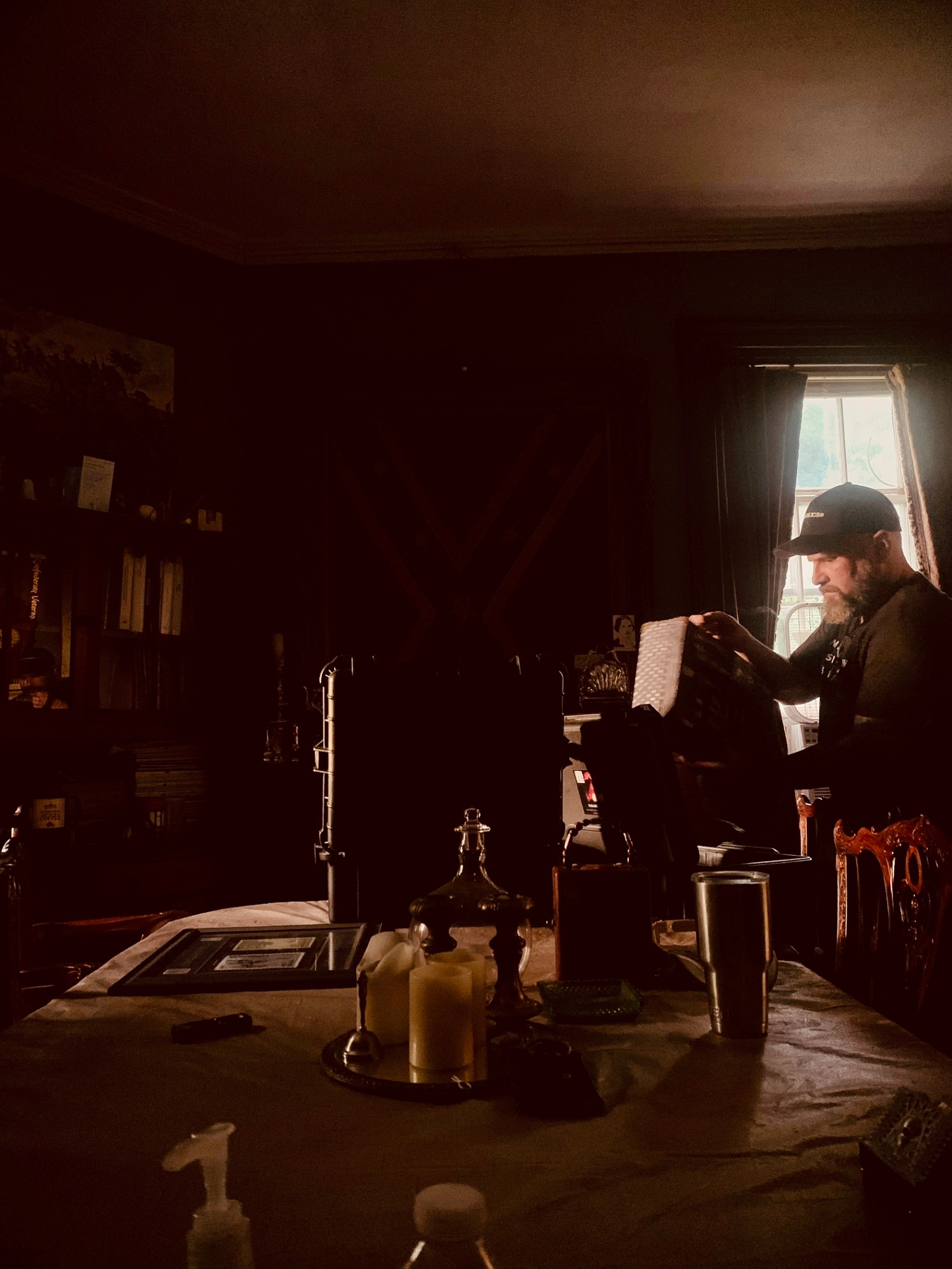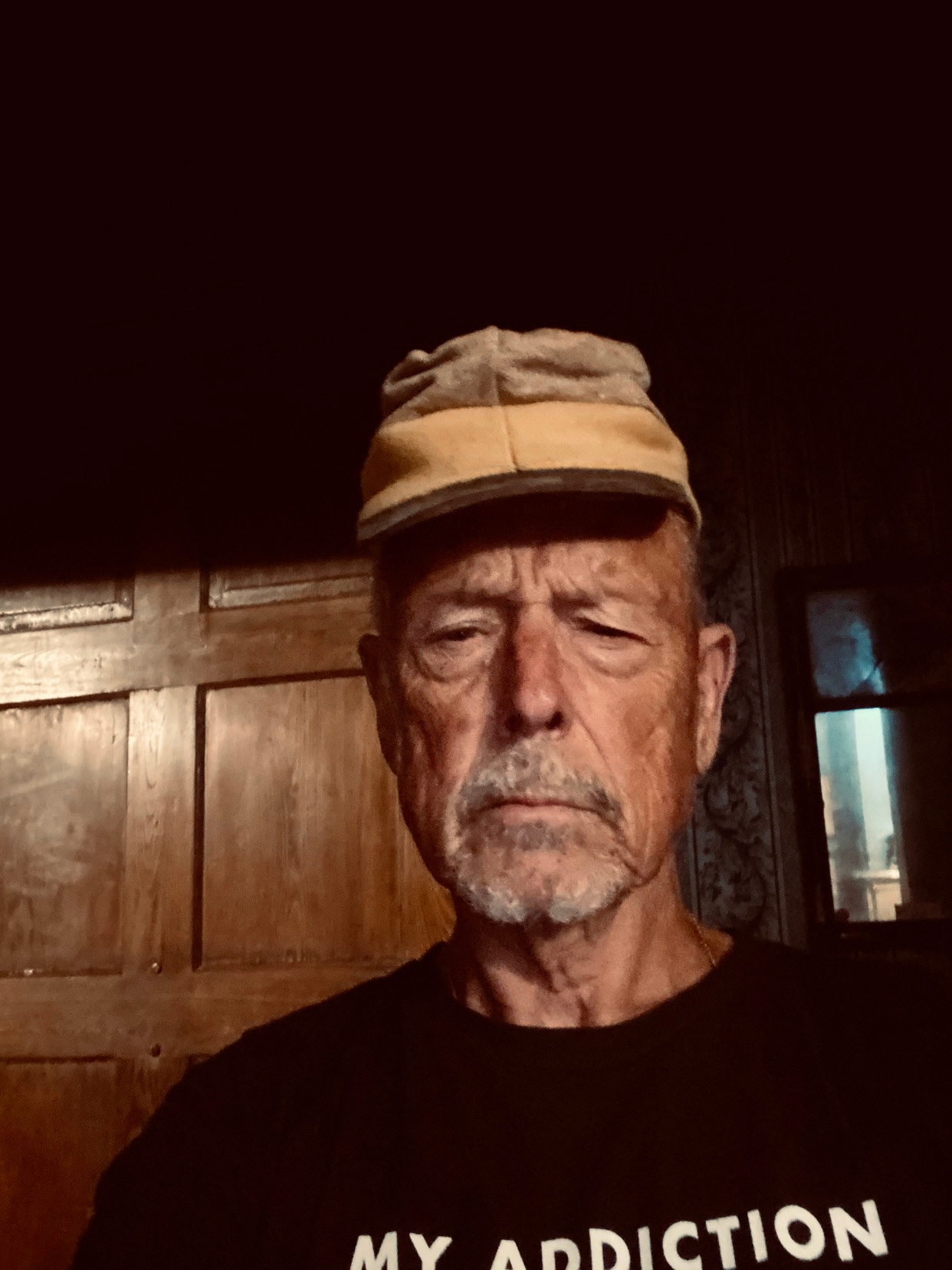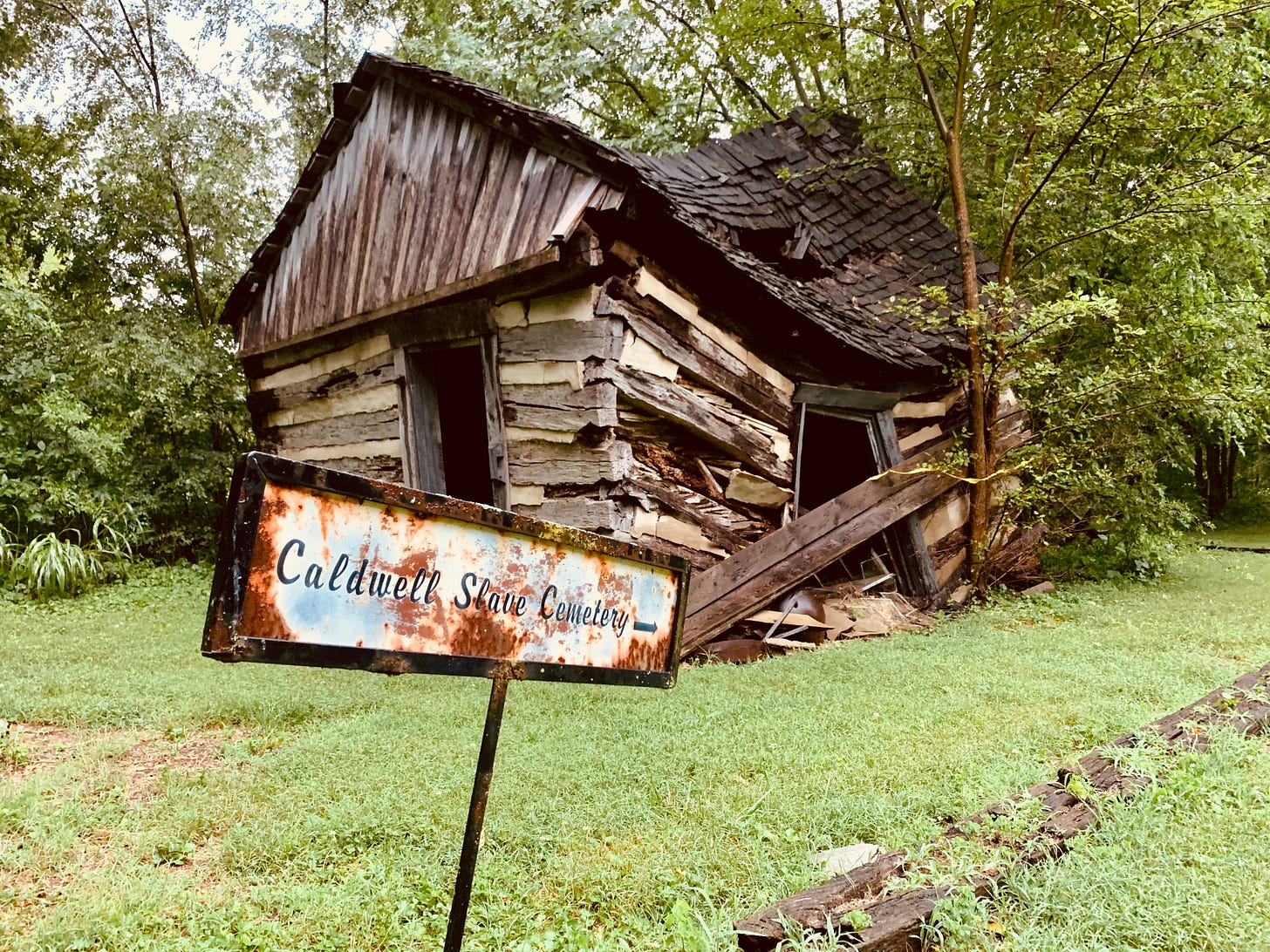Revisiting the Ghosts of Octagon Hall
A Reflection on History, Stories, and the Paranormal Phenomenon
First, a heartfelt thank-you to Scott Flood for hosting my one and only visit to Octagon Hall. This incredible site, steeped in history and wrapped in layers of ghost lore, continues to intrigue both casual visitors and dedicated paranormal researchers alike.
When I shared my original Octagon Hall post back in the summer of 2020, it sparked more conversation—and controversy—than I anticipated. Looking back, I realize the world was in a very different place, marked by heightened tensions over race, history, and justice. My commentary in the video was informed by the broader cultural climate of that moment, as protests and unrest swept the nation. While my intent wasn’t political or meant to stoke divisions, I felt it was important to acknowledge the legacy of racism embedded not just in places like Octagon Hall but in the larger tapestry of American history. Sites like this serve as stark reminders of the atrocities humanity can inflict upon itself, offering opportunities to reflect and, hopefully, grow.
The tension between history and folklore is also a key part of Octagon Hall’s story. One of the most compelling tales associated with the site is that of Mary Elizabeth Caldwell, the young girl said to have tragically died after her dress caught fire by the basement kitchen fireplace. During our initial research for the 2020 post, we had uncovered conflicting information about this story. Census records from 1860 and 1870 show a Mary Elizabeth Caldwell alive years after the supposed accident. Additionally, notes from the A.J. Caldwell family group sheet, filed with the Simpson County Historical Society, question whether her death as a child was even factual.
In 2020, we reached out to both Octagon Hall and the local historical society for clarification, but to this day, no definitive answers have emerged. Interestingly, this is a recurring theme in the paranormal field: the way stories, whether factually accurate or not, seem to persist and even feed the phenomenon itself. It’s as if the energy of belief and folklore generates its own momentum independent of historical truth. This raises questions about how our minds project onto these experiences—and how the phenomenon, in a trickster-like way, seems to thrive on those projections.
From a paranormal perspective, Octagon Hall continues to fascinate. My two favorite sessions during our investigation were the Geobox session in Mary Elizabeth’s room and the Reverse Speech Box session in the family cemetery. Both yielded responses that were direct, intelligent, and undeniably compelling. The name “Buckner” came through during one session—a name tied to the Civil War history of the site and the Orphan Brigade, which camped on the property. These connections between ITC responses and historical details never fail to captivate me.
I also want to highlight the Reverse Speech Box, which has since blown up and gone to ghost box heaven. That remarkable device consistently delivered responses that defied explanation. Built by Steve Hultay, the device reversed all incoming audio, making it impossible for coherent phrases to naturally occur. Yet, I received clear and contextually relevant replies, raising questions that are as exciting as they are unanswerable. Reverse speech remains an integral component of my ITC experiments.
As always, I’ve preserved the historic timeline and notes from my original post, which provide a detailed look at Octagon Hall’s architectural and cultural significance. The house stands as a witness to a turbulent period in American history, from its ties to the Civil War to its use as a sanctuary for wounded soldiers. These layers of history are what make the location so powerful, both as a site of remembrance and as a hotspot for paranormal activity.
While the mysteries of Octagon Hall remain unresolved, one thing is certain: the stories, whether grounded in fact or not, continue to evoke strong emotions and provoke thought. That, in itself, is a testament to the enduring power of places like this to connect us to the past and challenge us to reckon with its legacies.
— Evel Ogilville
Video:
Conflicting Information Pertaining To Mary Elizabeth Caldwell’s Fireplace-Related Death:


Octagon Hall
(Also referred to as Octagon House, Mayfair Farm(s), Eight-Sided Mansion, Caldwell-Williams House)
6040 Bowling Green Road
Franklin, KY 42134
Historic Timeline
• Foundation of limestone laid for the three-story brick family home of Andrew Jackson (AJ) Caldwell, a prosperous farmer and leather tannery owner, on plantation site/215-acre farm in 1847.
• Construction of home by slave labor completed 1859-1860.
▪ Edwin Hendricks, contractor; R. F. Haynes, bricklayer; Joe Thomas Ditmore, carpenter (Franklin Favorite, 1/25/2001)
▪ Bricks believed burned on property from red clay of surrounding countryside and lumber hewn from trees on farm.
▪ “Rumored first bricks fired as the cannons roared at Ft. Sumpter.” (Franklin Favorite, 5/21/1992)
▪ “It is said that one slave with a gift for wood carving alone cut and finished all the baseboarding and frame work.” (Courier-Journal, 9/20/1954)
▪ Caldwell relatives noted one of slaves who was skilled and talented craftsman said to have carved eight-sided posts and designs that are part of banisters on main stairwell and doorways. (Franklin Favorite, 5/21/1992; 1/25/2001)
▪ Four large rooms in addition to halls and alcoves on each floor.
▪ Full basement, two small subbasements
▪ Bottom floor considered basement, partially above ground, with kitchen, pantry and cellar; “but legends say also used as a dungeon.” (Franklin Favorite, 5/21/1992)
▪ Caldwell relatives say the sub-cellar “once described as a mystery-chamber was no more than a sweet potato cellar.” (Franklin Favorite, 10/6/1938)
▪ Large octagon-shaped copper lantern once adorned top of house; octagon-shaped chimneys
▪ Cupola hit by lightning and burned in 1920. Caldwell said to have once instructed slave to hide beehive there for safekeeping from Union soldiers.
▪ Rear porch added sometime after construction by Caldwell’s sons. A son also noted the Civil War stopped much of the construction operation and the house remained in that condition until long after Caldwell’s death. “The walls were put up and the inside partially finished.” (Park City Daily News, 2/8/1981)
▪ Old sundial in backyard with inscription: “Grow old along with me, the best is yet to be.” (Courier-Journal, 9/20/1954)
▪ Slave quarters located behind house.
▪ “By 1860, Caldwell had increased his wealth substantially. He had more than doubled his real estate value and was noted as owning $9,500 in personal property, of which a great portion was the value of his now 34-member slave labor force, who lived in three slave quarter buildings.” (explorekyhistory)
▪ Two cemeteries located on property, as well as “mass graves and bone piles.” (Franklin Favorite, 11/1/2018)
▪ Caldwell owned 62 slaves and many were buried on the property near the house. (Park City Daily News, 3/4/2010)
▪ “Many slaves and their children died at the plantation home.” (Franklin Favorite, 10/18/2007)
▪ Grounds also included a slave cemetery, two log slave cabins, smokehouse, carriage shed & barns circa 1862 and 1919.
• Caldwell believed to have died in home of typhoid fever in 1866 at age 47. Buried in Fairview Cemetery in Bowling Green.
▪ First wife Elizabeth Akers said to have died of measles/typhoid fever in June 1851 at age 29, within months of death of 18-month-old son in November 1851.
▪ “Buried in small family cemetery at Octagon Hall with 2 children. The fieldstone surrounding the graves was added later to protect the graves.” (findagrave)
• Linked graves are Mary Elizabeth Caldwell (1847-1854, grave description as buried next to mother) and A.J. Caldwell (1850-1851)
▪ Conflicting stories (age/year) of daughter Mary Elizabeth dying from injuries suffered after dress caught fire by basement kitchen fireplace.
• Mary E., age 11, listed in 1860 Census.
• Mary E. Caldwell, age 23, listed as residing with James and Fannie McElwain (sister) in 1870 Census.
• Record in family bible of Andrew Jackson Caldwell does not indicate death of Mary Elizabeth. Same death year as grave link (1854) for his sister Elizabeth Sutton. (usgenwebsites)
• Dr. Miles Williams, Nashville osteopath, purchased property from Caldwell’s second wife Harriet and restored residence, which had fallen into disrepair, in mid-1900s. Renamed as Mayfair; enjoyed retirement maintaining home and farm, “loved every brick” until death in 1954. (Courier-Journal, 9/20/1954)
▪ Indoor plumbing and electricity installed in 1948.
• Residence received Simpson County’s first historical marker located in front of home in 1962: “an ante bellum landmark.” Original stolen by vandals in 1974.
• Listed on National Register of Historic Places in 1980.
• After Mrs. Williams’ death in 1981, ownership passed through descendants and used as rental property.
• Nonprofit organization Captain David C. Walker Camp 640 Sons of Confederate Veterans acquired in 2001 and opened to public, housing Confederate Studies Archive/Museum. (Franklin Favorite, 4/26/2001) Octagon Hall Foundation formed.
▪ Octagon Hall Museum, ghost hunts currently operated.
Why an octagon?
• During the 1850s, the concept of the octagon in domestic architecture incited the imagination of the country. This movement was given impetus by Orson S. Fowler in his book “The Octagon House: A Home For All,” first published in 1848. Fowler espoused the octagon as the perfect shape for architecture. He introduced to his readers “not merely a new concept of building but a fresh attitude toward housing: “Why continue to build in the same square form of all past ages? Nature’s forms are mostly spherical …” (National Register of Historic Places Inventory, 1980)
• “Caldwell determinedly said Southern Colonials weren’t for him.” (Courier-Journal, 9/20/1954)
• Some believe Caldwell decided on unique shape because of fear of windstorms. Eight-sided homes with 45-degree-angled walls said to have good ventilation and offer protection from strong winds. Caldwell relatives refuted theory, saying he wanted “something different.” Others say desired only octagon-shaped house in the state.
▪ 68 surviving octagon houses included on the U.S. National Register of Historic Places; Octagon Hall one of two in Kentucky.
▪ Deadhouses, structures used for the temporary storage of bodies before burial or transportation, were built in an octagonal shape in the mid-to-late-19th century unique to Ontario, Canada and thought inspired by the fad in U.S. promoted by Fowler (above).
Civil War importance (1861-1865)
Home’s construction completed just prior to Civil War’s start. Throughout Civil War, property used by both Confederate and Union forces as hospital and sanctuary for soldiers. Caldwell known to be staunch-Confederate supporter; relation Confederate Army colonel. Caldwell faced court-martialing if caught harboring Confederates. House’s location between Louisville-Nashville Pike and L&N Railroad, allowed to be used as observation post.
• Because one of tallest structures in area, said Caldwell and family could watch battle of Bowling Green from roof. (Franklin Favorite, 7/7/1983)
• Property utilized by “Orphan Brigade” in February 1862 as overnight encampment after Confederate forces evacuated stronghold in Bowling Green and took refuge at the site.
▪ Caldwell’s nephew Col. John W. Caldwell noted in diary of “camping at Andrew’s strange house six miles from Franklin.” (“Franklin Favorite, 2/22/2007)
▪ Estimated 8,000-12,000 Confederate soldiers camped on the grounds, generals staying inside, before retreating into Tennessee the following morning.
▪ Snow fell overnight on sleeping troops, and when they awoke and pulled back their blankets said to have “looked like the dead rising from the fields.” (Franklin Favorite, 1/25/2001)
▪ Two days later Union army came in pursuit of the Confederates and took occupation of the home.
▪ Buell’s Federal Forces said to have raided Caldwell’s beehives, livestock, food stores and killed Mrs. Caldwell’s pet cow Old Spot/Belle, storing the carcass in the well and leaving the family without water for days.
• Because of Confederate ties, Caldwell known to have harbored wounded soldiers from capture by Union forces and hid them in house.
▪ Story of soldier wandering up to house at night and over breakfast learning he was son of Caldwell’s sister in Texas, who had run away at 16 to enlist and was searching for “an uncle who lived in ‘a round brick house near Franklin.’” (Franklin Favorite, 10/6/1938)
▪ Numerous stories of discoveries of secret tunnels, passageways and hiding places on property, as well as soldier deaths.
▪ “Many were badly wounded and did not recover and are buried on the grounds.” (Franklin Favorite, 10/18/2007)
▪ Mrs. Miles Williams said to have told historical society of discovery of boot of Confederate soldier, cut as if taken off the wounded. (Franklin Favorite, 7/7/1983)
▪ One of soldiers put in attic to hide from Union; his foot was wounded and apparently after taking off boot to remove pressure bled to death; similarly another hiding in crawl space said to have died bleeding out from gunshot wound to leg; another found on front steps early one morning who apparently died there after his knocking at door wasn’t heard. (Franklin Favorite, 10/3/2003; 11/1/2018)
Thank you again to Eunice Spector for her impeccable research!
— Evel Ogilville










